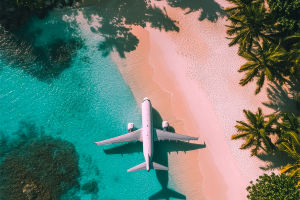Friends, craving a beach town that balances barefoot calm with just-right energy? Pipa, on Brazil’s northeast coast, nails it.
Expect sandstone cliffs, warm Atlantic breaks, and sleepy lanes lined with surf shacks and smoothie spots. This guide covers the best beaches, day trips, food, and smart logistics so every hour lands well.
Why Pipa
Pipa sits 52 miles/84 km south of Natal. Strict local rules limit high-rise buildings, keeping the skyline low and charming. Best months run August–March for sunny days and steady surf; April–July brings quick tropical showers and fewer visitors.
Getting There
Fly into Natal (NAT). Shared shuttles to Pipa take 1.5–2 hours and typically cost $12–$20 per person; private transfers average $35–$60 per car. Renting a compact car runs about $25–$45 per day. In town, mototaxis handle short hops for $2–$4, while local vans connect nearby beaches.
Dolphin Bay
Baía dos Golfinhos (Dolphin Bay) regularly sees pods cruising close to shore. Aim for mid-to-low tide and late morning when waters are calm. Kayaks rent for about R$60 per hour (≈$12), but many visitors simply swim out from the sand. Access from Pipa Beach by walking north around the rocks at low tide, or descend newly built stairs from the cliffs. Wear reef-safe sunscreen and water shoes.
Sand Dunes
The region’s blonde dunes are best on a guided buggy ride. Southbound routes toward Sagi are closest to Pipa; northbound circuits near Natal include postcard viewpoints and sweeping beaches. Expect 6–8 hours door to door, with prices commonly $35–$70 depending on route and group size. Pack a scarf or bandana for sand, sunglasses, and a small daypack.
Cliff Sunset
Chapadão Hill overlooks Praia do Amor with rust-red cliffs and teal water. Walk 20 minutes from the beach via carved steps; aim for sunrise or sunset for soft light and fewer people. At very low tide, shallow rock pools form below—watch footing and avoid cliff edges on windy days.
Surf Spots
Pipa is a year-round surf scene with breaks for all levels. Praia do Amor suits beginners through intermediates (sandy bottom, board rentals on the sand). Madeiro mixes sand and reef with playful peaks—and frequent dolphin sightings. Cacimbinhas offers room to spread out and consistent lines. Lajão, a long right over reef, is for advanced surfers.
Typical prices: $7–$12 per hour for board rental; $20–$40 for 90-minute lessons. Bring zinc and a rash guard; tides and currents change quickly.
Center Beach
Praia do Centro hums with energy—great for people-watching and easy swims. Chairs and umbrellas rent for R$10–R$30 (≈$2–$6). Street vendors pass with a rotating menu of fresh fruit, grilled corn, and chilled coconut water. If browsing isn’t on the agenda, a simple “não, obrigado” keeps the lounging uninterrupted.
Seafood Finds
Pipa’s menus lean fresh and simple: grilled fish with lime, shrimp moqueca, octopus-free rice bowls, tapioca crepes, and açaí after the beach. Expect $8–$15 for mains at casual spots; upscale plates trend $18–$30. Lunch deals near Praia do Centro are good value, while cliff-top restaurants trade a few extra dollars for sweeping views. Reserve on holiday weekends.
Giant Cashew
Cajueiro de Pirangi—often called the world’s largest cashew tree—sprawls across roughly two acres. A boardwalk slips beneath the canopy with a small lookout for photos. It sits about 45 minutes from Pipa in Pirangi do Norte; entry is around R$2 (≈$0.50). Go mid-morning on weekdays to avoid queues and heat, then pick up fresh cashew nuts or cold cashew juice nearby.
Where to Stay
Budget: Hostels and shared rooms start at $12–$25; many include breakfast.
Mid-range: Pousadas with pools and gardens run $60–$120, a sweet spot for couples.
Upscale: Boutique villas and design hotels from $200+ offer cliff views and calm courtyards.
Location tips: Stay near Praia do Amor for surf, in Pipa Centro for dining and quick beach access, or in Tibau do Sul (10 minutes north) for extra quiet.
Practical Tips
ATMs can be limited—carry a bit of cash. Tides shape the day; check the chart to time walks to Dolphin Bay and tidal pools. Keep 50 meters from dolphins if paddling; never chase or feed wildlife. Pack a lightweight long-sleeve for sun, and a dry bag for phones on dune trips or kayak routes.
Sample Day
Sunrise at Chapadão, smoothie bowl in Centro, a late-morning swim with hopeful dolphin spotting, budget-friendly seafood lunch, nap time during peak heat, golden-hour surf at Madeiro, then a relaxed stroll along the main street for tapioca and ice cream.
Conclusion
Pipa rewards slow days: cliff walks, warm sets, and bays where dolphins glide by unbothered. Which will be first—sunrise over Chapadão, a beginner wave at Praia do Amor, or a kayak to Dolphin Bay? Share your pick and any time-saving tips you uncover along the way.


